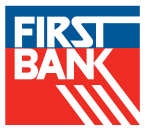By Lisa Bulaich
Originally published in the Sacramento Business Journal
In the course of many business owners’ journey to success, they’ll find themselves considering a lease, a purchase, or the refinance of a commercial property. Perhaps the business has outgrown its current space or a second location is needed for expansion, or continuing to pay the rising cost of a lease just doesn’t make good business sense. The motivating factors are many.
When these situations occur, business owners often find themselves evaluating new lease arrangements, researching purchase options, or evaluating the details surrounding a refinance. A lease can make sense, however, if the business owner is not quite ready to put down roots. Purchasing a commercial property can be a better option when the business owner is ready.
Purchasing enables business owners to reap the benefits of paying themselves rent while purchasing an asset, to take advantage of tax write offs, and to create a new revenue stream in retirement. And, of course, refinancing has many benefits as well such as rate reduction, converting from a variable to a fixed rate, lowering monthly payments by extending the term, and pulling cash out to do tenant improvements.
Once a business owner decides to get serious about financing, many questions arise, including: “Can I qualify, how much cash do I need, and should I use a Conventional or SBA Loan?”
Borrowers should consider the following before purchasing commercial real estate:
- How much cash is available to inject into a purchase without depleting reserves and straining cash flow?
- How much square footage does the business require today and into the future?
- What’s the difference between SBA financing and Conventional financing?
In my experience, deciding what type of owner occupied financing suits the borrower comes down to how much the borrower has for the cash injection, what’s the use of funds, and his or her cash flow strength.
Conventional financing typically requires a larger cash injection than SBA financing. That said, conventional financing also typically requires less paperwork and less fees. Both options are equally beneficial, yet may not be equally suitable for every borrower.
A trusted lender can help navigate these waters by listening to a business owner’s goals, anticipating and answering questions, providing needed information, and structuring loans that meet the needs of the business now and into the future.
Taking the time to seek a knowledgeable lender that has the borrower’s best interest at heart will help to position the business owner for a successful future.


